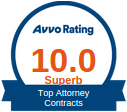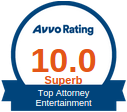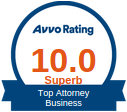In his capacity as a Columnist for California Sports Lawyer®, Founder Jeremy Evans has written a column about the major artificial intelligence and residual deal points in the SAG-AFTRA, WGA, and DGA agreements with the Alliance of Motion Picture and Television Producers.
You can read the full column below.
~
Three of the most recognized unions in Hollywood, the Screen Actors Guild (SAG-AFTRA), Writers Guild of America (WGA), and Directors Guild of America (DGA) have all reached agreements with the Alliance of Motion Picture and Television Producers (AMPTP) in general and specifically to distribute residuals from streaming (e.g., subscription video on demand, SVOD) films and series. The deal point is significant because it gives the three Hollywood talent unions access to additional revenue from films and series, but also helps to bridge the gap between lost and future revenues where DVD video sales have plummeted in recent years with the growth of streaming and their platforms. DVD sales were once a second bite at the proverbial apple prior to streaming.
However, SAG-AFTRA received the best streaming deal of the three Hollywood unions. Here are the major deal points:
SAG-AFTRA, WGA, and DGA:
- Fixed residual fee, domestic and foreign, with yearly increases with foreign fees seeing a significant jump with ad-supported tiers also included.
SAG-AFTRA and WGA:
- Definition of a streaming “view” is defined as the “total viewing time for a film or season of TV divided by running time.”
- The residual payment vests when twenty percent (20%) of a streaming service’s domestic subscribers watch a title (film or series) in the first ninety (90) days of its release. However, SAG-AFTRA’S fixed residual will double and be more than the WGA’s fifty percent (50%) bonus.
SAG-AFTRA only:
- Creation of a payment distribution fund overseen by SAG-AFTRA and AMPTP paying seventy-five percent (75%) of the bonus to performers on films and series that reach the 20% streaming audience threshold mentioned earlier. The remaining twenty-five percent (25%) percent will be distributed to other performers determined by a set of to be determined guidelines colloquially referred to as the “Robin Hood Fund” (e.g., those members who did not reached the 20% threshold).
The residuals deal point was a major concession to obtain for the three Hollywood unions. It will be interesting and essential how titles are distributed and displayed on platforms because exclusivity of a title may mean reaching the 20% threshold versus 10% on one and 10% on another platform, for example. Placement is also important and should be monitored because as many learned with hit series Suits and Drive to Survive, where the title gets released and is displayed can mean the difference with success and indifference. However, DVD sales may not be dead after all. Much like the resurgence of vinyl records to collectors and those wanting a physical copy of something that adds a different listening sound, DVD’s are now providing film and television lovers another option to watch content that leaves a platform. Streaming platforms are beginning to oversee loss of titles to save costs on cloud storage and to highlight other shows. People will need another place to find those missing library items and an additional revenue stream for the studios, streamers, and unions.
On the issue of artificial intelligence (AI), SAG-AFTRA and the WGA each dealt with the concerns and growth differently. With the WGA, the main concerns were around writing and number of writers to avoid replacement. The rules the WGA agreed to go specifically to use of AI and numerical and timeline limitations and mandatory minimums.
For SAG-AFTRA, it was how and where AI can be used in production, post-production, payment for such use, and the length of the use. For actors, there was an issue about replacement, but more towards guardrails to prevent overuse. One of the issues with the guardrails approach is that the actors will have to challenge the studios and streamers through arbitration if there is an issue in overuse or unauthorized use of generative AI. It is of note that computer-generated imagery (CGI) is different technology from AI and has been used in Hollywood films since 1958.
In the same breadth, YouTube recently added restrictions to generative AI use on its platform to prevent deepfakes and sound-alikes. Interestingly, the CEO of OpenAI Sam Atlman left the company join Microsoft as a lead on the AI team—giving more tools and insight to a powerful entity looking to have a greater impact in business and programs. Imagine, for example, a Microsoft Word program that helps writers write beyond spell check (e.g., combining ChatGPT tech with Microsoft Word). Programs that are powerful, but that should be managed and carefully considered before implementation, if at all.
~
About Jeremy M. Evans:
Jeremy M. Evans is the Chief Entrepreneur Officer, Founder & Managing Attorney at California Sports Lawyer®, representing entertainment, media, and sports clients in contractual, intellectual property, and dealmaking matters. Evans is an award-winning attorney and industry leader based in Los Angeles and Newport Beach, California. He can be reached at Jeremy@CSLlegal.com. www.CSLlegal.com.
Copyright © 2023. California Sports Lawyer®. All Rights Reserved.





